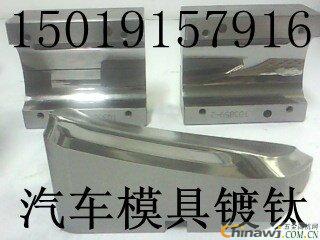introduction
Experts from the International Mold Association believe that the mold is the emperor of the metal processing industry. The mold material is the basis of the mold industry. But even new mold materials are still difficult to meet the high overall performance requirements of the mold. Surface engineering is a branch that is more active and faster in the field of materials science and engineering. Surface engineering has the comprehensiveness of disciplines, the diversity of means, the extensive functionality, the potential innovation, the protection of the environment, the strong practicability and the huge synergy, which are valued by all walks of life. The application of surface engineering technology in the field of mold manufacturing largely compensates for the shortage of mold materials.
The surface engineering technology that can be used in mold manufacturing is extensive, including traditional surface hardening technology, thermal diffusion technology, surfacing technology and electroplating hard chrome technology, as well as laser surface strengthening technology and physical vapor deposition which have been rapidly developed in the past 20 years. Technology (PVD), chemical vapor deposition (CVC), ion implantation, thermal spray, thermal spray welding, composite vacuum PVD plating, composite brush plating and electroless plating. The progress of rare earth surface engineering technology and the rise of nano surface engineering technology will further promote the development of surface engineering technology for mold manufacturing, such as the performance of physical vapor deposition film layer and the correlation between film and matrix bonding strength, rare earth elements. The addition is advantageous for improving the bonding strength between the film and the substrate, and the surface density of the film layer is obviously increased. At the same time, the addition of rare earth elements can significantly improve the wear resistance of the film layer, such as super hard TiN film (adding rare earth elements) applied to the surface of the mold cavity, so that the mold surface exhibits high hardness, low friction coefficient and good Chemical stability improves the life of the mold.
Surface engineering technology is applied to the surface treatment of mold cavities to achieve the following objectives :
(1) Improve the surface hardness, wear resistance, corrosion resistance and high temperature oxidation resistance of the mold cavity, and greatly improve the service life of the mold. Improve the scratch resistance and mold release capability of the mold cavity surface to increase productivity.
(2) Carbon tool steel or low alloy steel treated by surface coating or alloying can achieve or exceed the performance index of high alloying mold materials and cemented carbides, thereby greatly reducing material costs.
(3) It can simplify the mold manufacturing process and heat treatment process and reduce the production cost.
(4) It can be used for the decoration of the surface of the mold cavity to improve the grade and added value of the product.
(5) It can be used for remanufacturing projects such as repair of molds.

Light Keel Metal Stud&Track Profile Roll Forming Machine
Keel Making Machine,Steel Tile Making Machine,Track Profile Roll Forming Machine,Light Keel Roll Forming Machinery
BOTOU HUATONG CORRUGATED MACHINERY MANUFACTURING CO.,LTD , http://www.htrollforming.com